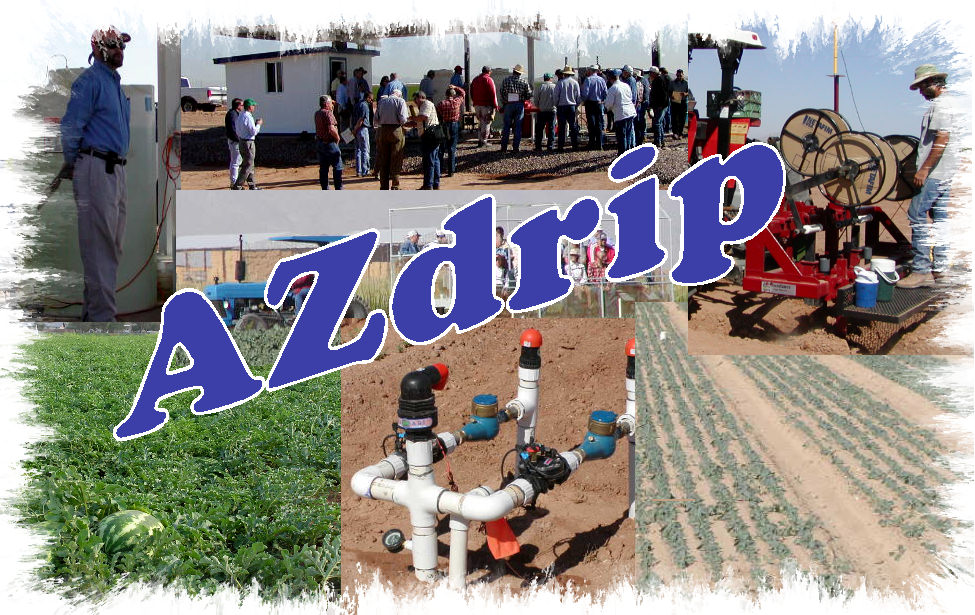
Subsurface
Drip Irrigation
Demonstration and Research Project
and Environmental Science
 |
The
University of Arizona |
| Subsurface
Drip Irrigation |
|
|
Department
of Soil, Water, and Environmental Science |
What is SDI? Subsurface drip irrigation (SDI) is the irrigation of crops through buried plastic tubes containing embedded emitters located at regular spacings. There are a wide variety of configurations and equipment used, however drip tubes are typically located 38" to 84" (134 to 213 cm) apart, and 6 to 10" (15 to 25 cm) below the soil surface. In the United States, SDI is most widely used for the irrigation of annual row and field crops, but it can be used for any crop. In other parts of the world (e.g. Israel), SDI is widely used for the irrigation of permanent crops. Subsurface drip irrigation has been used in Arizona for at least 25 years. However, its adoption has proceeded slowly for a number of reasons, including the high initial capital cost–often $1000/acre or more–and the intensive management needed. Subsurface drip irrigation provides the ultimate in water use efficiency for open-field agriculture, often resulting in water savings of 25-50% compared to flood irrigation. The use of SDI offers many other advantages for crop production, including less nitrate leaching compared to surface irrigation, higher yields, a dry soil surface for improved weed control and crop health, the ability to apply water and nutrients to the most active part of the root zone, protection of drip lines from damage due to cultivation and other operations, and the ability to safely irrigate with wastewater while preventing human contact. Despite rapid urbanization in Arizona, agriculture is responsible for approximately 70% of water use. Our growing population places ever-increasing pressure on farmers to reduce water use. The objectives of the AZdrip project are to 1) evaluate management practices for efficient and sustainable irrigation using SDI, and 2) provide information on and demonstration of SDI management practices for Arizona growers. This project is a "showcase" for demonstration of SDI management practices to Arizona growers who may consider switching to SDI. |
|
|
Search
AZdrip and ACIS
|
For comments and questions regarding the AZdrip site contact: webmanageer